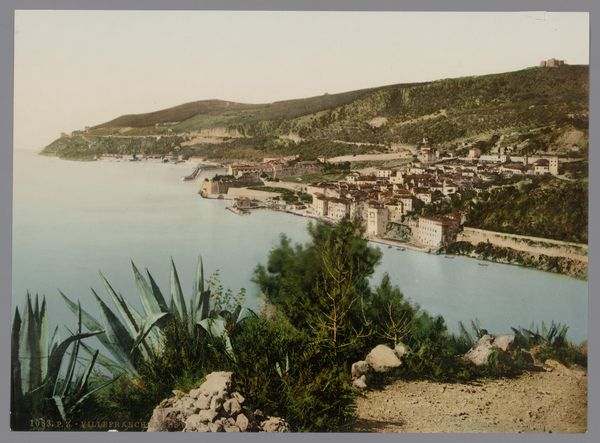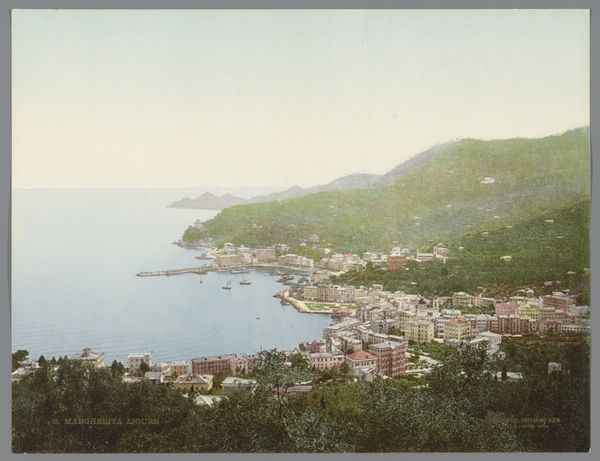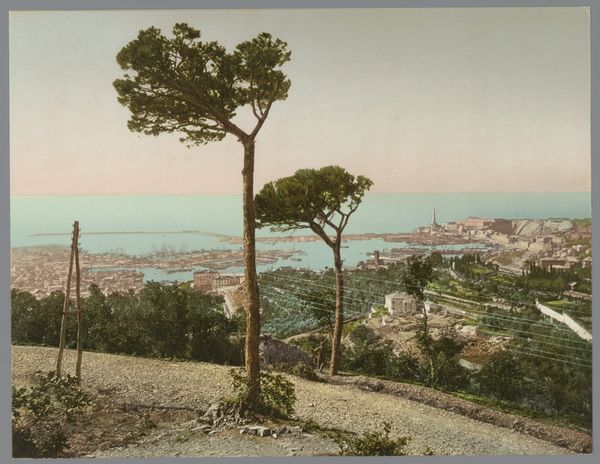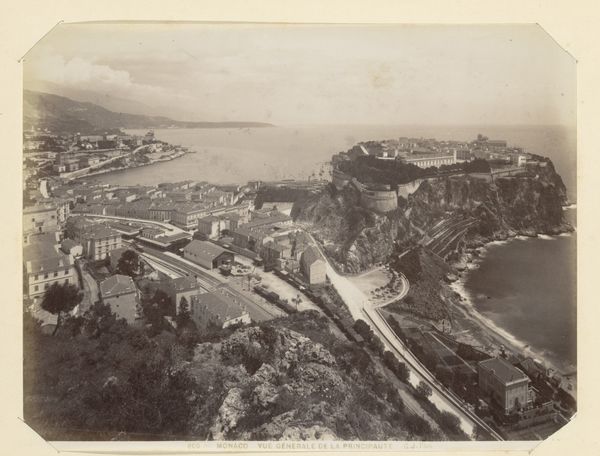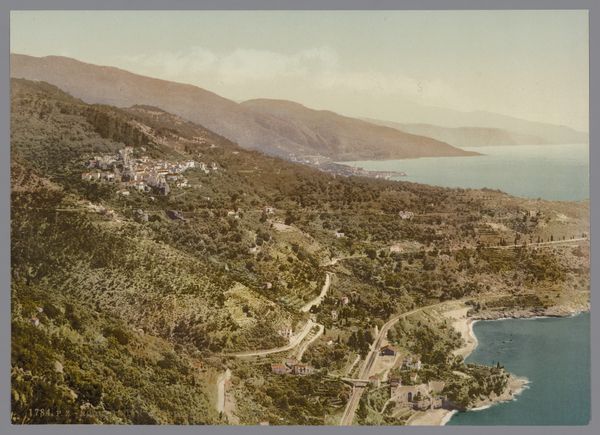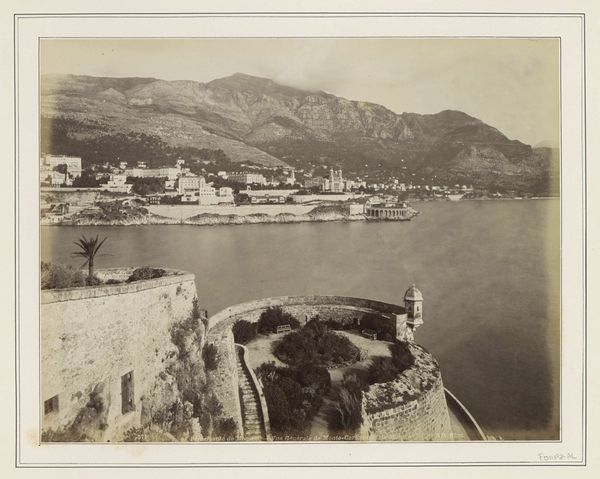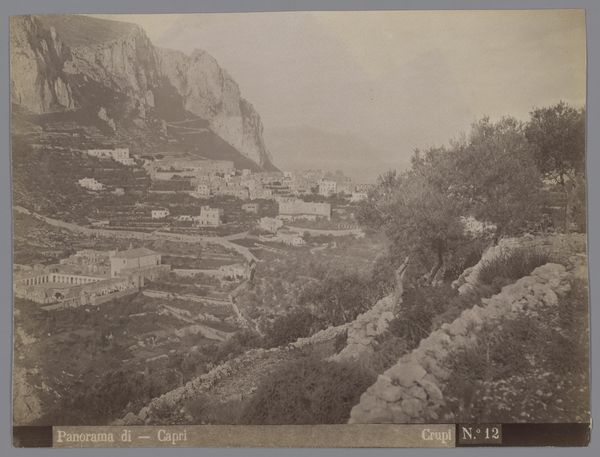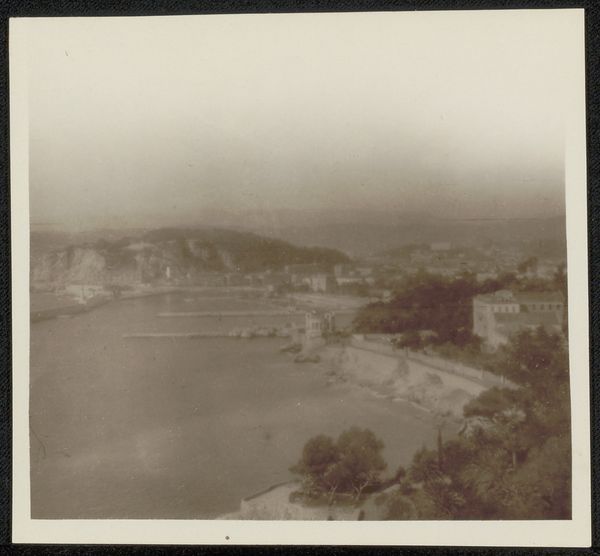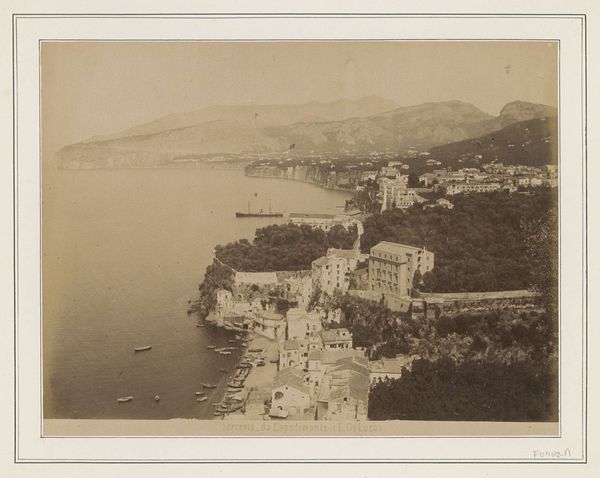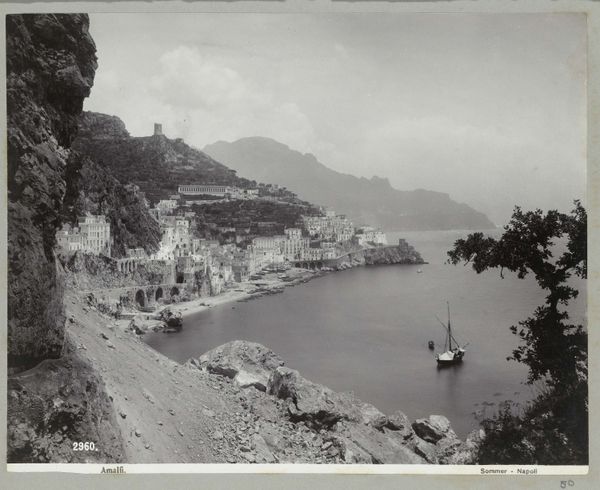
print, photography
# print
#
landscape
#
photography
#
natural colour palette
#
orientalism
#
cityscape
Dimensions: height 165 mm, width 223 mm
Copyright: Rijks Museum: Open Domain
Editor: This photograph, titled "Gezicht op Monaco," dating from around 1889 to 1920, offers a captivating cityscape. What strikes me is the somewhat detached viewpoint – like we're observing a stage set. What do you see in this image? Curator: It's fascinating to consider this through the lens of Orientalism. These kinds of landscape views were hugely popular, but often crafted for a European audience with particular expectations. Think about the composition. Doesn't it position the viewer as an outsider looking in? How do you see that framing influencing our interpretation? Editor: I see what you mean. We are on the periphery, looking down. It presents a kind of ownership or perhaps even… control? Curator: Precisely. Consider also the period. This image emerges in the late 19th/early 20th century. What do we know about colonization, tourism, and the power dynamics operating then? Perhaps these "natural colours" actually idealize or exoticize Monaco, suppressing other stories or realities that were probably going on in that society. Editor: That makes sense. The way it is styled encourages that. The houses almost appear quaint. Was photography at this time already advanced enough to be posed? Curator: Although colour photography existed, the tones and contrasts were manually adjusted in production to align with contemporary tastes. These artistic decisions often strengthened existing cultural stereotypes. Do you think a modern photographer would present this landscape differently and, if so, how? Editor: I think a contemporary image would draw attention to the people who live in Monaco today, perhaps exploring some of the more hidden realities of such a location. It definitely provides a different viewpoint and helps me reconsider what I'm actually seeing here. Curator: Exactly! Recognizing these historical undercurrents encourages us to be critical viewers, attentive to how photographs – even seemingly innocuous landscapes – participate in constructing our understanding of the world and its power relations.
Comments
No comments
Be the first to comment and join the conversation on the ultimate creative platform.
